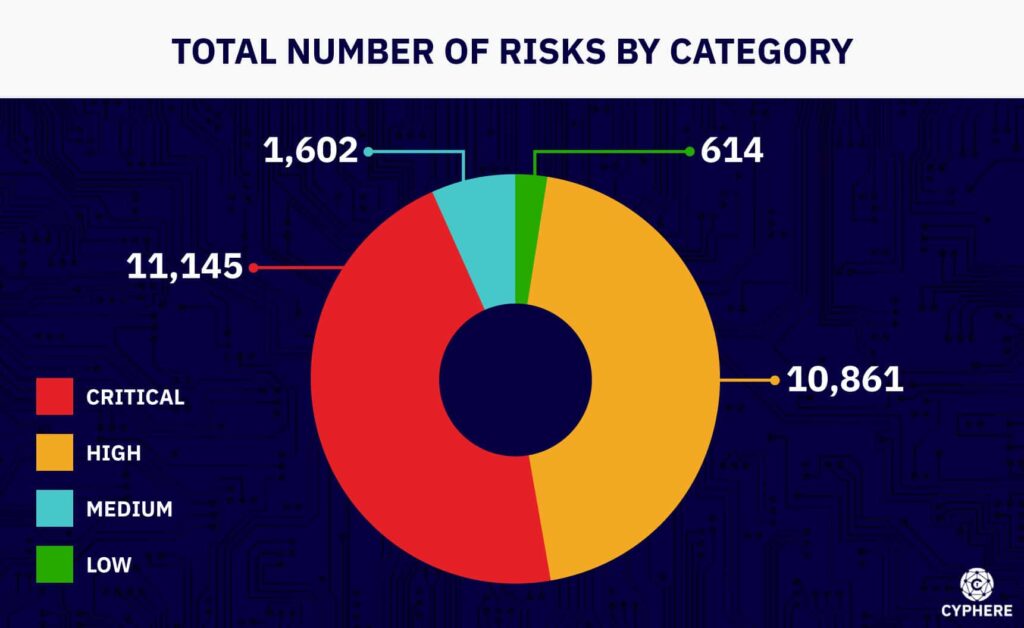
Organisations employ various strategies to protect their digital assets and infrastructure. Two key components of a robust cybersecurity framework are Red Teams and Blue Teams. These specialised groups play distinct yet complementary roles in ensuring an organisation’s security posture remains strong in the face of constantly emerging threats.
This comprehensive guide will delve into the intricacies of Red Team vs Blue Team operations, exploring their purposes, methodologies, and the critical role they play in modern cybersecurity practices.
What is the Red Team?
Red Teams in cybersecurity are groups of offensive security professionals who simulate real-world attacks to test an organisation’s defences. They employ the same tactics, techniques, and procedures (TTPs) used by actual threat actors to identify vulnerabilities and exploit weaknesses in systems, networks, and processes.
The concept of Red Teams originates from military practices, where one team (Red Team) would simulate enemy tactics to challenge the other team (Blue Team). This approach has been successfully adapted to enhance cybersecurity measures in various industries.
Purpose of Red Team
The primary purpose of a Red Team is to emulate the tactics, techniques, and procedures (TTPs) of potential adversaries. Doing so helps organisations understand how attackers might breach their defences.
The primary objectives of Red Teams include:
- Identifying security gaps in an organisation’s infrastructure
- Providing actionable insights to improve security measures
- Testing the effectiveness of incident response plans
- Assessing the overall security posture of the organisation
Their goal is to find weaknesses and provide detailed recommendations on how to fix them, thereby enhancing the organisation’s defences against real-world attacks.
Red Teams Operations
Red Teams operate using a structured approach to penetration testing and security assessments. Their operations typically include the following steps:
- Reconnaissance: This initial phase involves gathering information about the target organisation to identify potential entry points. Red Team members research the company’s network infrastructure, employee details, and any other publicly available information that could aid in planning an attack.
- Exploitation: In this phase, Red Teams use various offensive security tools to exploit identified vulnerabilities. This can include leveraging software vulnerabilities, weak passwords, and misconfigured systems. The primary goal is to gain unauthorised access to the organisation’s systems.
- Post-Exploitation: Once access is gained, Red Team members focus on maintaining access to the compromised systems and gathering sensitive data. They move laterally within the network, escalate privileges, and establish persistent access points to simulate long-term breaches.
- Reporting: The final phase involves documenting the findings and providing recommendations to improve the organisation’s defences. The report includes detailed descriptions of the vulnerabilities found, the methods used to exploit them, and actionable steps to mitigate these risks.
Red Team members often employ sophisticated techniques to avoid detection, including malware, phishing, and exploiting zero-day vulnerabilities. All of the red team operations compared to blue team are offensive in nature.
Red Team Tools and Techniques
Red Teams utilise various offensive security tools to simulate real-world attacks. Some standard tools and techniques include:
- Exploit kits: Software toolkits that automate the exploitation of known vulnerabilities
- Password cracking tools: Used to crack weak passwords and gain access to accounts
- Scanning tools: Employed to identify vulnerabilities in systems and networks
- Social engineering tools: Used to simulate phishing attacks and other social engineering techniques
- Custom malware: Developed to evade detection by standard security measures
- Physical security testing equipment: Used to assess and bypass physical security controls
What is a Blue Team?
Blue Teams are responsible for defending an organisation against cyber threats. Blue Teams consist of defensive security professionals who focus on implementing and maintaining security measures to protect against attacks. They ensure an organisation’s critical assets’ integrity, confidentiality, and availability.

Cyber attacks are not a matter of if, but when. Be prepared.
Box-ticking approach to penetration tests is long gone. We help you identify, analyse and remediate vulnerabilities so you don’t see the same pentest report next time.
Purpose of Blue Team
The primary objectives of Blue Teams include:
- Monitoring network traffic for suspicious activity
- Implementing preventive security controls such as firewalls and anti-malware software
- Responding to security incidents and mitigating potential damage
- Conducting regular security assessments and audits to ensure compliance with security policies
Blue Teams are the defenders, standing as the frontline against cyber attacks. They proactively monitor and fortify the organisation’s defences, ensuring that any attempt to breach the security perimeter is detected and thwarted. Their focus is on maintaining a secure environment, preventing breaches, and minimising the impact of any security incidents that do occur.
A 2023report by Cybersecurity Venturespredicts that by 2025, there will be 3.5 million unfilled cybersecurity jobs globally, highlighting the critical need for effective red and blue team operations to bridge the security gap.
Blue Team Operations
Blue Teams continuously monitor and defend the organisation’s network and systems; that’s the primary difference from the red team, which is offensive in nature. Their operations typically involve:
- Monitoring and Detection: Blue Teams use intrusion detection systems (IDS) and other monitoring tools to detect suspicious activities. They analyse network traffic, system logs, and user behaviour to identify potential threats.
- Incident Response: When threats are detected, Blue Teams respond promptly to mitigate damage and prevent further intrusion. This involves isolating affected systems, eradicating malware, and conducting forensic analysis to understand the attack vector.
- Vulnerability Management: Blue Teams regularly scan systems for vulnerabilities and apply patches to fix security gaps. This proactive approach ensures that known vulnerabilities are addressed before being exploited.
- Security Policy Implementation: Blue Teams develop and enforce security policies and procedures to ensure the organisation’s defences are current. This includes training employees on security best practices and ensuring compliance with regulatory requirements.
Blue Teams work collaboratively with other security personnel to maintain a robust security posture, ensuring the organisation is prepared to defend against new and emerging threats.
Blue Team Tools and Techniques
Blue Teams utilise a diverse range of security tools to perform their duties. Some standard tools and techniques include:
- Security Information and Event Management (SIEM) systems collect and analyse data from various security sources to provide a holistic view of the organisation’s security posture.
- Intrusion Detection/Prevention Systems (IDS/IPS): These monitor network traffic and system activity to identify and potentially prevent malicious activity.
- Vulnerability scanners: Used to identify vulnerabilities in systems and software.
- Security Orchestration, Automation, and Response (SOAR) platforms: These automate tasks associated with security incident response.
- Endpoint Detection and Response (EDR) tools: Used to monitor and respond to suspicious activities on endpoints.
- Network segmentation: Implemented to contain potential breaches and limit lateral movement within the network.
Should red and blue teams work together or separate?
Red and blue teams, while seemingly antagonistic, work in a complementary fashion to create a holistic security posture for an organisation. Here’s how they collaborate:
Red team exercises: Red team engagements are typically conducted with the knowledge and consent of the blue team. Before the training begins, the scope and objectives are clearly defined to avoid confusion and ensure the blue team is prepared to respond to simulated attacks.
Sharing information: Following a red team exercise, information about the identified vulnerabilities and exploited weaknesses is shared with the blue team. This allows the blue team to prioritise patching vulnerabilities and implement additional security controls to address the identified gaps.
Continuous improvement: The combined efforts of red and blue teams create a constant feedback loop. Red team exercises expose weaknesses, which the blue team works to address. This ongoing testing, improvement, and refinement process strengthens the organisation’s overall security posture over time.
Purple Team
Purple Teams has gained traction in the cybersecurity community. Purple Teams combine members from both Red and Blue Teams, fostering collaboration and a more comprehensive approach to cybersecurity. Purple Team operations typically involve:
- Collaborative Exercises: Red and Blue Team members work together on simulated attacks and defences.
- Knowledge Sharing Sessions: Regular meetings to discuss new attack techniques, defensive strategies, and emerging threats.
- Tool Development: Collaborating on developing custom tools to benefit offensive and defensive operations.
- Continuous Feedback Loop: Establishing ongoing communication and improvement process between Red and Blue Teams.
Author’s take on Red Vs Blue Team operations in pentesting
The red team has been at the forefront of popularity due to the offensive techniques and tools at play. Although the red team is not the answer to validate your security controls every time, the red team is a crucial part of your security strategy once your organisation has started on the cyber security maturity cycle. This includes processes, people, and technology controls.
What traditionally used to be blue teamwork has now expanded to a much more focused domain with sub-domains to be looked after. These days, it includes security operations, threat management, security management roles, and resources.
Therefore, the red team and blue operations are essential to an organisation’s security strategy. Hopefully, this also settles red team vs blue team vs purple team debate and how they are important to an organisations security strategy.
Key Takeaways
Red and blue teams play distinct but crucial roles in safeguarding an organisation’s security posture. Red teams act as simulated adversaries, proactively identifying weaknesses through offensive cyber security techniques. Blue teams defend the organisation’s security infrastructure and work diligently to prevent and respond to cyberattacks.
By working collaboratively, red and blue teams create a robust security environment that allows organisations to stay ahead of evolving cyber threats. The recent emergence of purple teams further highlights the value of collaboration and integrated approaches to cybersecurity.
FAQs
Is the red team better than the blue?
No, red and blue teams complement each other. Red teams find weaknesses, while blue teams fix them and maintain ongoing security. Both are essential for a comprehensive security strategy.
What is the difference between the red, blue, and purple teams?
Red teams focus on offensive security, blue teams focus on defensive security, and purple teams combine both approaches for a comprehensive security strategy.
What are the skills of the red team vs the blue team?
Red teams require offensive security skills like penetration testing and exploit development, while blue teams need defensive skills such as incident response and security monitoring.
Is Pen testing the red team?
Yes, penetration testing is a core function of red teams, although red team engagements often go beyond traditional pen testing in scope and duration.
How much does the red Vs blue team pentesting cost?
Costs vary depending on the scope and complexity of the engagement, red team costs vary from £10000 to £30000 for small to medium-sized assessments. Organisations can expect to invest several thousand to tens of thousands of dollars for comprehensive red and blue team exercises.















